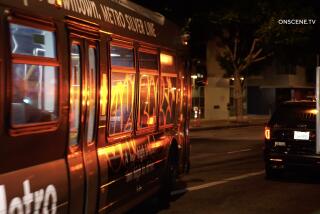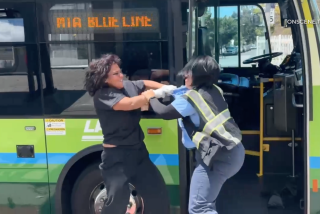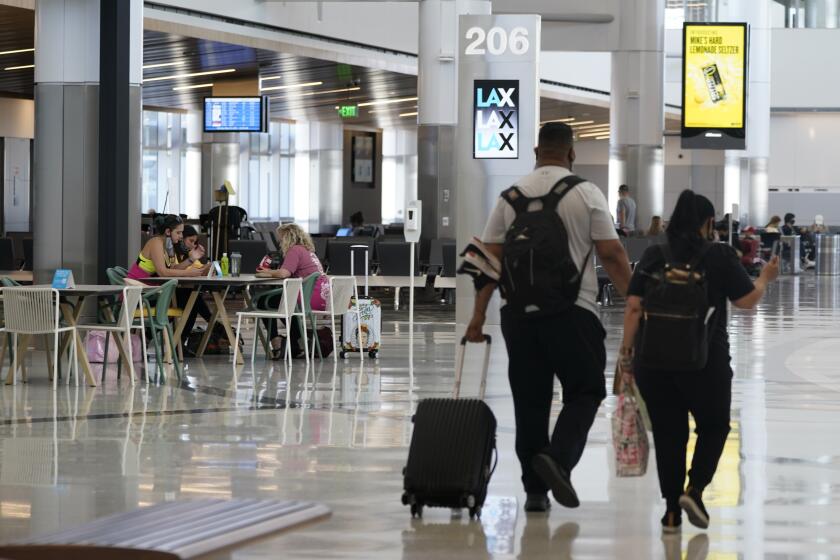Advertisers’ Next Stop : Painted and ‘Wallpapered’ Buses May Soon Hit Streets of L.A.
- Share via
Just when you thought you’d seen every possible ad vehicle, prepare for the painted bus.
Public buses sporting huge painted or vinyl ads--stretching almost from headlights to taillights--may soon be rolling down the streets of Los Angeles. Six of these billboard-like buses--flashing ads for Crystal Pepsi, a new clear cola--will hit the streets of San Francisco and the Oakland area next week. Even the windows are covered with ads--outsiders can’t look in, but special materials allow the drivers and commuters to see out.
If the giant bus ads take hold in the Bay Area, ad executives suggest, Los Angeles--with its estimated 2,200 public buses--will probably be next.
“It combines the size of a billboard with the uniqueness of a blimp and the penetration of a bus,” said Jodi Yegelwel, marketing director of TDI, the New York firm that places ads on bus sides from Manhattan to Los Angeles. She said the massive ads--now common in some big East European cities--will probably be in most major U.S. cities by the end of the year.
Some of the buses are actually painted end-to-end. Others feature computer-generated vinyl coatings stripped across the sides like wallpaper. Ad executives say graffiti artists have not been attracted to the buses--at least in early testing. What’s more, they add, graffiti can be wiped off the painted buses relatively easily.
Advertisers are always searching for unconventional ways to help their products stand out, and this is particularly true during times of economic uncertainty.
Some skeptics, however, are criticizing the new ad vehicles before they even begin to roll.
“All it does is turn buses into moving billboards,” said Ronald K.L. Collins, co-founder of the Center for the Study of Commercialism, a Washington-based consumer group. “This is just another example of pushing commercialism to an extreme.”
No specific proposal has yet been detailed for the Los Angeles market. But local residents are not likely to raise many objections, said Anthony Fortuno, director of marketing for the Regional Transit District.
“We’ve taken lots of surveys in the past, and consumers are pretty indifferent as to whether or not we should have advertisements on the buses,” he said.
Pepsi is paying nearly $3,000 a month per bus--nearly three times the cost of placing conventional ads on both sides of a bus.
That is why TDI is promoting the new ads as a great way for cash-strapped transportation systems in big cities to boost revenue.
San Francisco transportation executives even considered turning some of their famous cable cars into similar ad vehicles, said James Tomes, film and lease coordinator for the San Francisco Municipal Railway. “But there’s not enough room on cable cars to do it.”
More to Read
Sign up for Essential California
The most important California stories and recommendations in your inbox every morning.
You may occasionally receive promotional content from the Los Angeles Times.










